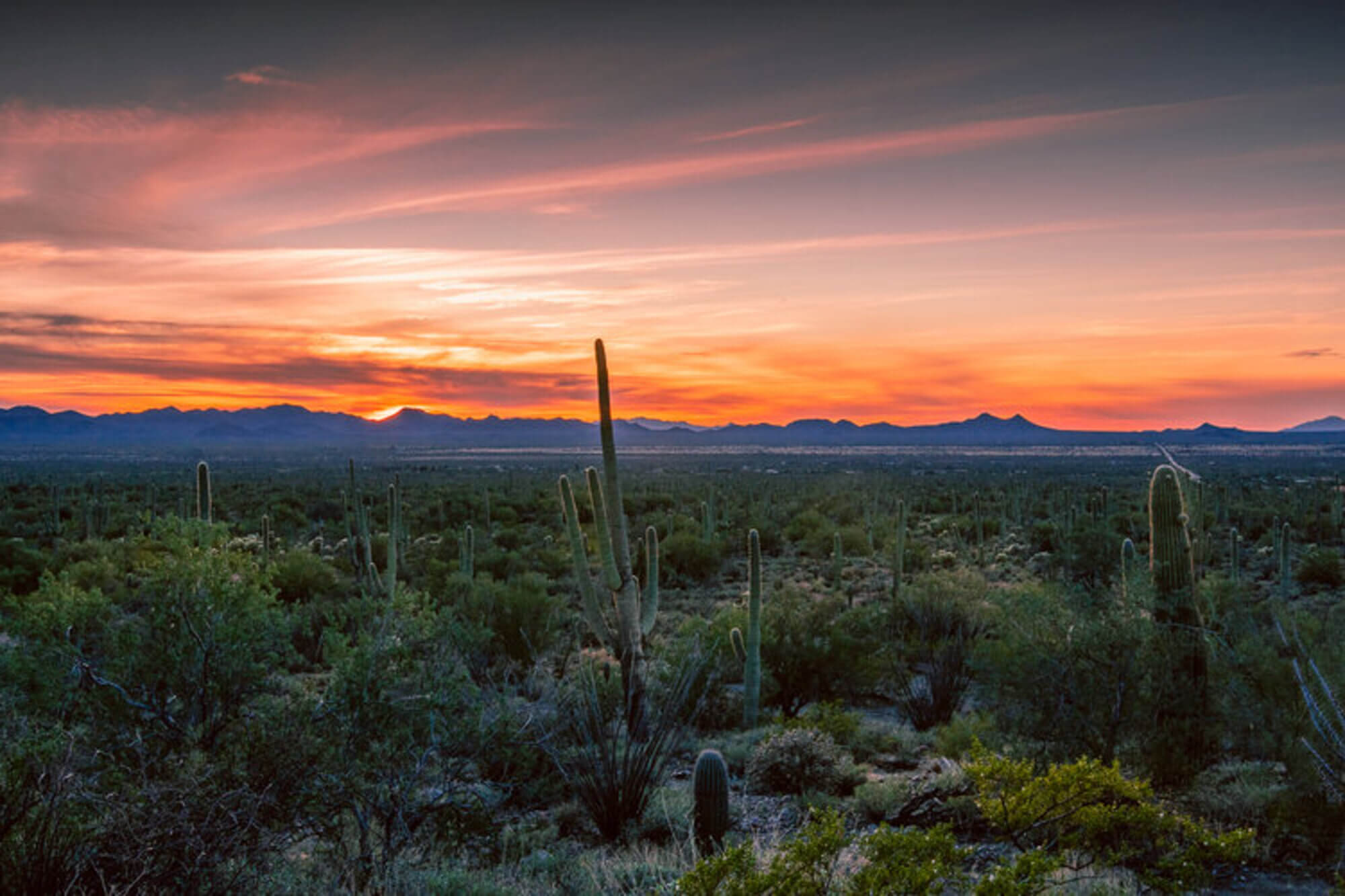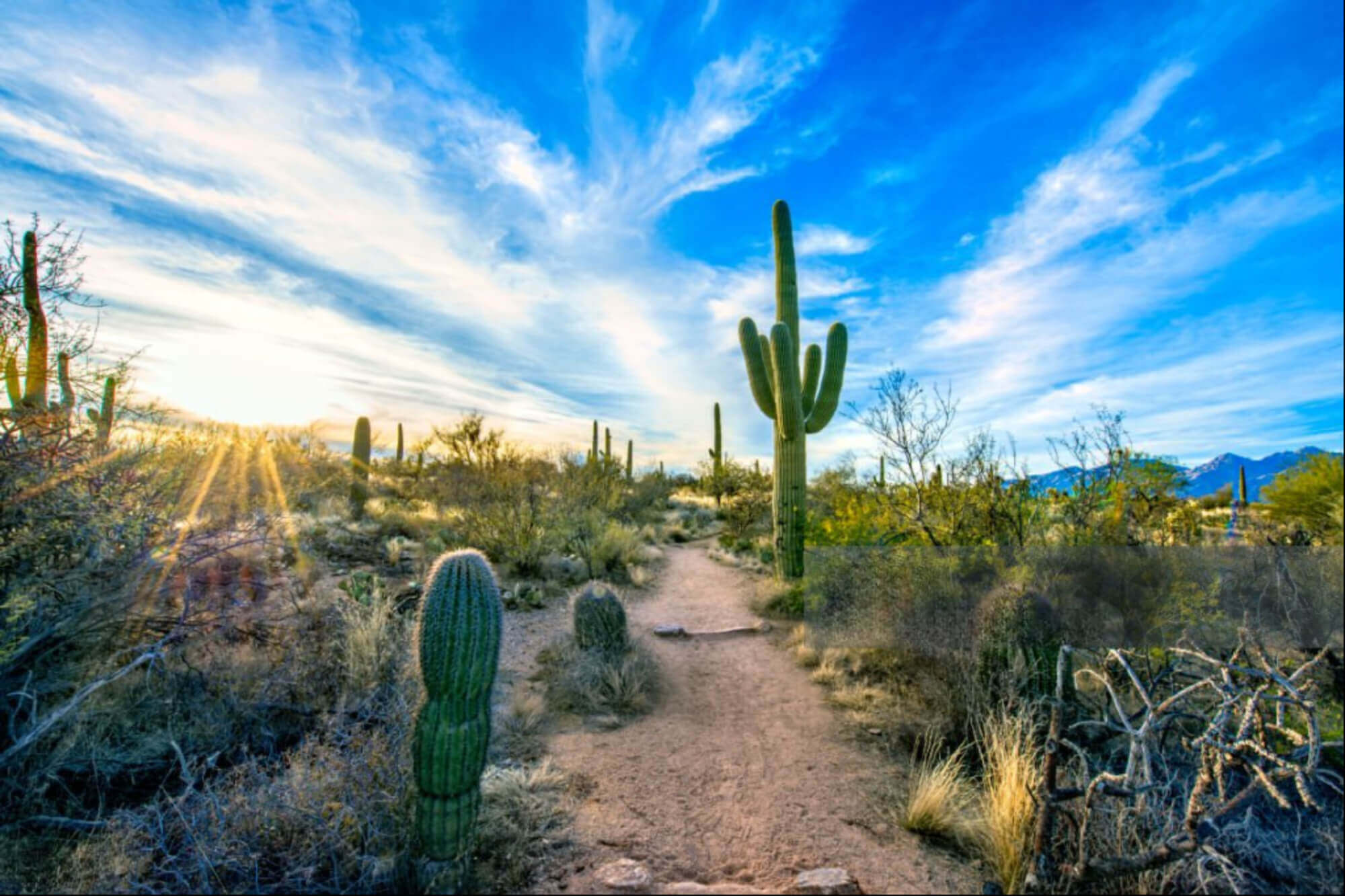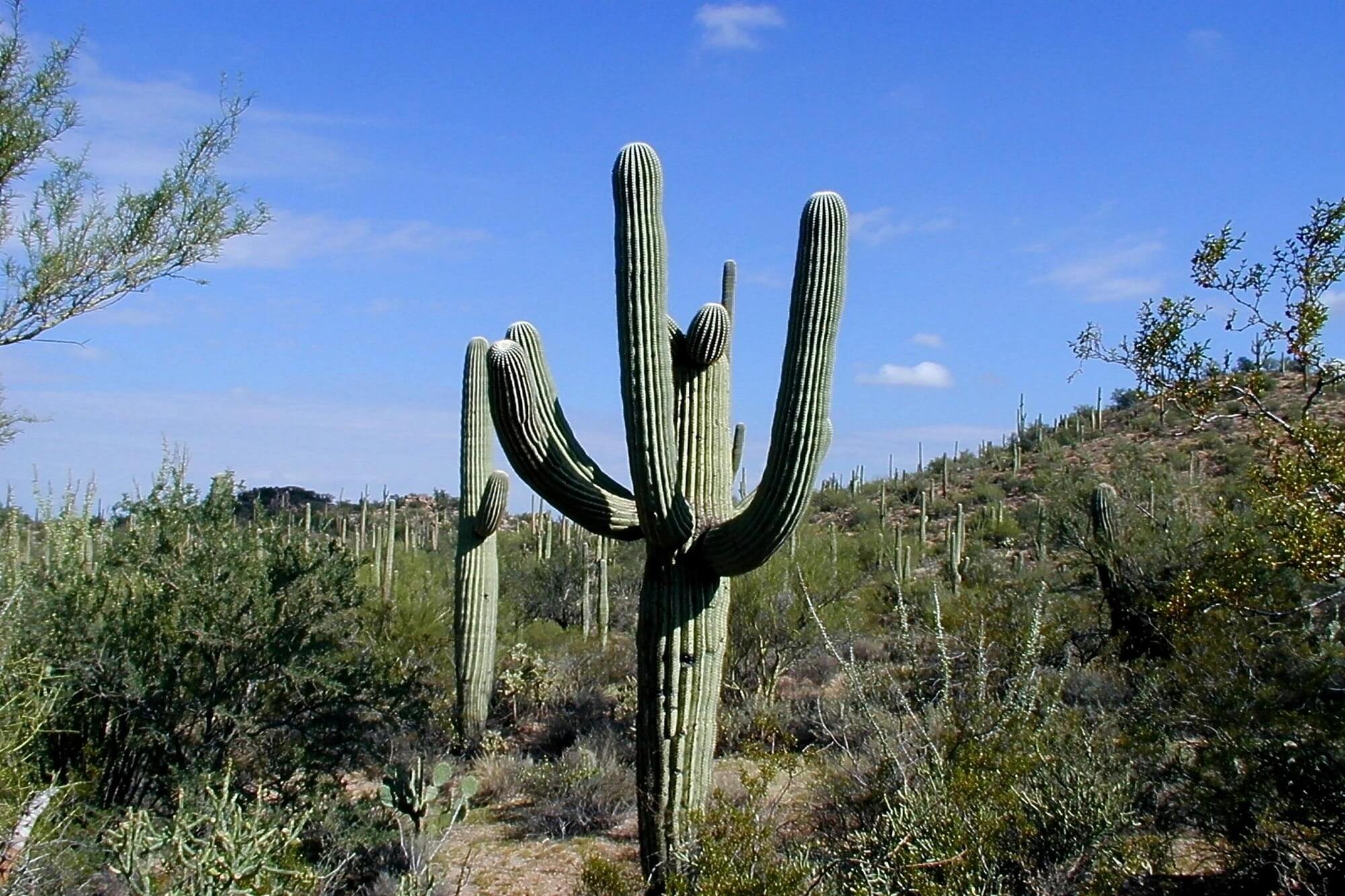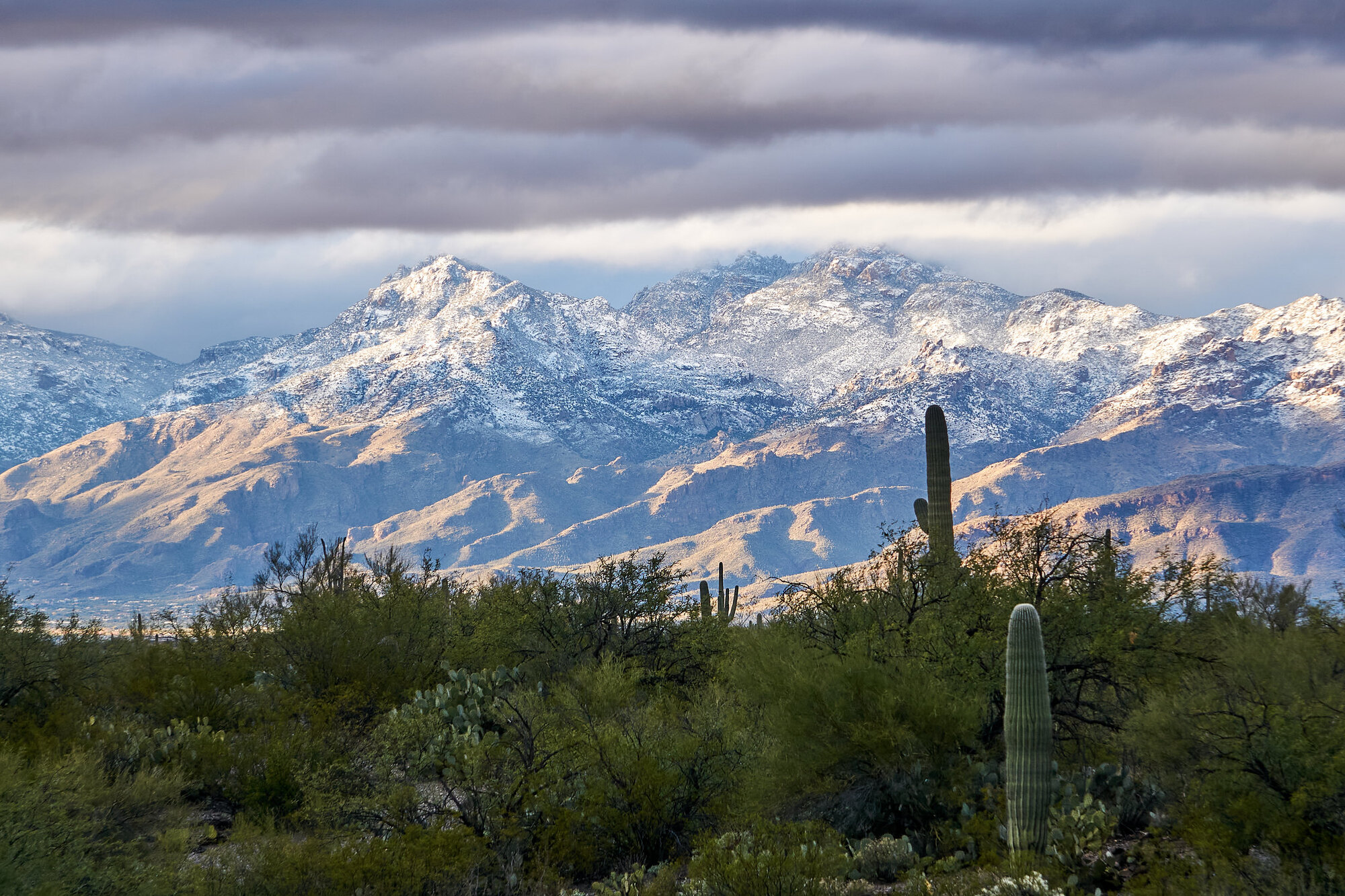Saguaro National Park is a unique treasure in the American Southwest. It boasts stunning landscapes and iconic cacti.
Located in southern Arizona, this park offers more than just a scenic view. It’s home to the giant saguaro cactus, which can grow over 40 feet tall. These majestic plants create a breathtaking backdrop for outdoor adventures. Visitors can explore diverse trails, witness vibrant sunsets, and discover local wildlife.
The park is split into two districts, each with its own charm. Whether you enjoy hiking, photography, or learning about desert ecosystems, Saguaro National Park has something for everyone. Ready to dive into the wonders of this natural gem? Let’s explore what makes this park so special.
Introduction To Saguaro
Saguaro National Park, located in the heart of the Arizona desert, is a sanctuary for the iconic Saguaro Cactus. This national park offers visitors a unique glimpse into the desert ecosystem, showcasing a rich biodiversity that includes various native plants and wildlife. The park is divided into two districts, each presenting its own distinct landscape and hiking trails. Whether you’re a nature enthusiast or simply looking to explore, Saguaro National Park provides an unforgettable experience.
Location And Size
Saguaro National Park is situated in southern Arizona, flanking the city of Tucson. The park spans over 92,000 acres, divided into two distinct districts: the Rincon Mountain District to the east and the Tucson Mountain District to the west. Each district offers a unique landscape and set of attractions.
The Rincon Mountain District is larger, covering about 67,000 acres. It features higher elevations and more diverse flora and fauna. The Tucson Mountain District, although smaller at around 25,000 acres, is equally captivating with its dense Saguaro Cactus forest and spectacular sunsets.
Key features of the park’s location and size include:
- Rincon Mountain District: Higher elevations, diverse wildlife, extensive hiking trails.
- Tucson Mountain District: Dense Saguaro forests, scenic drives, visitor center.
Both districts offer numerous hiking trails, ranging from easy walks to challenging backcountry routes. The park’s extensive trail system allows visitors to explore the desert ecosystem and its unique biodiversity. The visitor centers in each district provide maps, educational exhibits, and information on conservation efforts.
Significance Of The Saguaro Cactus
The Saguaro Cactus is the symbol of the American Southwest. It plays a crucial role in the desert ecosystem. These towering giants, which can grow over 40 feet tall, provide shelter and food for various wildlife species.
The significance of the Saguaro Cactus includes:
- Habitat: Provides nesting sites for birds like the Gila woodpecker and elf owl.
- Food Source: Produces fruit that feeds many desert animals.
- Water Storage: Stores water in its tissues, essential for survival in the arid desert.
The Saguaro Cactus is also deeply rooted in the culture and traditions of Native American tribes. They consider it a sacred plant. Conservation efforts in Saguaro National Park aim to protect these majestic cacti and their habitat. The park’s role as a wildlife sanctuary ensures the preservation of this unique desert ecosystem for future generations.
Visitors to Saguaro National Park can learn more about the Saguaro Cactus and its importance through educational programs and guided tours. These activities highlight the vital role this iconic plant plays in maintaining the balance of the desert ecosystem.
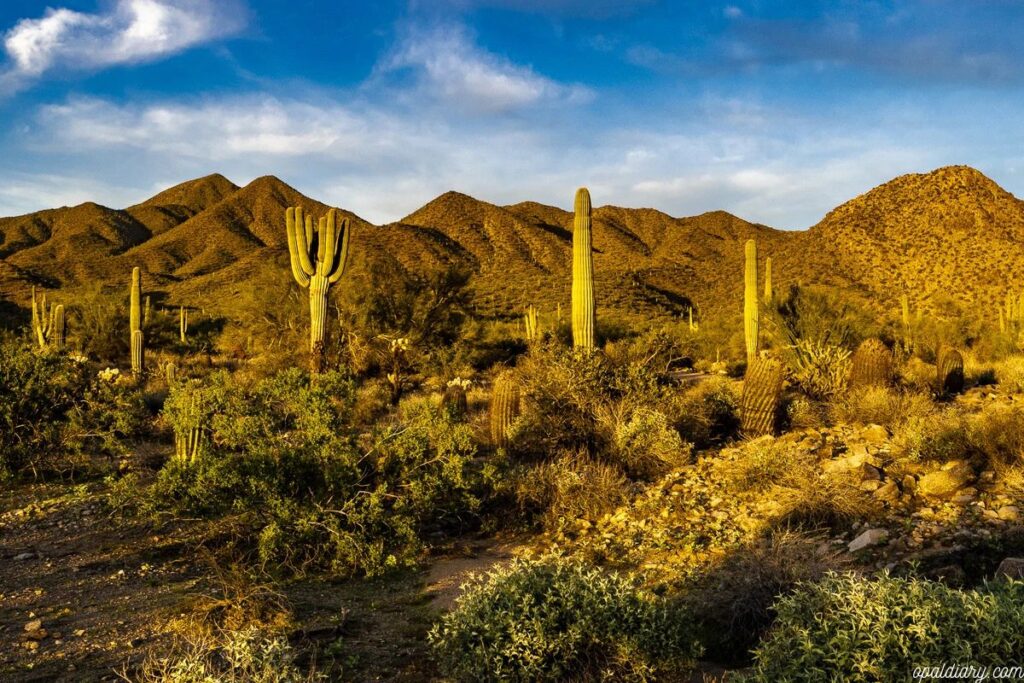
Park History
Saguaro National Park, located in southern Arizona, is renowned for its stunning desert landscape and iconic Saguaro Cactus. The park offers a unique outdoor recreation experience, showcasing the rich biodiversity and natural beauty of the Sonoran Desert. Understanding the park’s history enhances appreciation for its conservation efforts and cultural significance.
Establishment
The establishment of Saguaro National Park dates back to the early 20th century. The drive to protect the unique Saguaro Cactus and the surrounding desert ecosystem began in the 1920s. On March 1, 1933, President Herbert Hoover proclaimed the area a national monument.
Efforts to elevate its status continued, and in 1961, the park expanded to include the Tucson Mountain District. This expansion aimed to protect additional desert landscapes and diverse wildlife species. Finally, on October 14, 1994, Congress redesignated the monument as Saguaro National Park, securing its place among the prestigious Arizona National Parks.
Key milestones in the park’s establishment:
- 1933: Initial designation as a national monument
- 1961: Expansion to include Tucson Mountain District
- 1994: Redesignation as Saguaro National Park
A table summarizing the park’s establishment timeline:
| Year | Event |
|---|---|
| 1933 | Designation as a national monument |
| 1961 | Expansion to include Tucson Mountain District |
| 1994 | Redesignation as Saguaro National Park |
Cultural Heritage
Saguaro National Park holds significant cultural heritage, reflecting the history of the native peoples and early settlers. The Hohokam people, who lived in the region over a thousand years ago, left behind remnants of their civilization, including petroglyphs and ancient tools.
These artifacts offer a glimpse into the lives of the early inhabitants, their connection to the land, and their understanding of the desert ecosystem. The park also preserves historical sites from early European settlers and ranchers who arrived in the 19th century.
Important aspects of the park’s cultural heritage include:
- Hohokam Petroglyphs: Ancient rock carvings depicting animals, humans, and geometric shapes
- Historic Ranches: Structures and remnants from early cattle ranching operations
- Native Plant Use: Knowledge of traditional uses of desert plants for food, medicine, and tools
The park’s cultural heritage is integral to its identity, offering visitors insights into the historical significance of the Sonoran Desert. Hiking trails and interpretive programs allow visitors to explore these cultural landmarks while appreciating the park’s natural beauty and commitment to wildlife conservation.
Flora And Fauna
Saguaro National Park, located in the heart of Arizona, is a haven for nature lovers and outdoor enthusiasts. The park is renowned for its stunning desert landscape, characterized by the towering Saguaro Cactus, which the park is named after. The flora and fauna of Saguaro National Park are diverse and unique, offering visitors a chance to experience the rich botanical diversity and the vibrant native wildlife of the Sonoran Desert.
Unique Plant Species
The flora of Saguaro National Park is as fascinating as it is diverse. The park is home to the iconic Saguaro Cactus, which can grow up to 60 feet tall and live for over 200 years. These majestic cacti are a vital part of the desert ecosystem, providing shelter and food for various species.
Besides the Saguaro Cactus, the park boasts a wide array of other unique plant species:
- Prickly Pear Cactus: Known for its flat, rounded pads and vibrant yellow flowers.
- Cholla Cactus: Recognized by its spiny, segmented stems that can easily attach to animals and humans.
- Ocotillo: A tall, spindly plant that produces bright red flowers, usually after rain.
- Creosote Bush: This shrub has a distinctive smell, especially after rain, and can live for thousands of years.
- Palo Verde Trees: These trees have green bark that allows them to photosynthesize even when leafless.
The desert flora in Saguaro National Park is adapted to survive the harsh conditions of the Sonoran Desert. These plants have evolved to store water, minimize water loss, and protect themselves from herbivores with spines and thorns. The park’s diverse plant life not only adds to its beauty but also plays a crucial role in supporting the ecosystem.
Wildlife Diversity
Saguaro National Park is not only rich in botanical diversity but also teeming with native wildlife. The desert landscape provides habitat for various animals, each adapted to survive in this arid environment. Visitors can encounter a wide range of species, from mammals and birds to reptiles and insects.
Some of the notable wildlife species in the park include:
- Gila Monster: A large, venomous lizard with distinctive orange and black markings.
- Desert Tortoise: Known for its slow movement and long lifespan, this reptile spends most of its life in burrows.
- Javelina: A pig-like mammal that travels in groups and feeds on cacti and other desert plants.
- Greater Roadrunner: A bird famous for its speed, often seen darting across hiking trails in search of prey.
- Harris’s Hawk: This bird of prey is unique for its cooperative hunting behavior, often seen in small groups.
Birdwatchers will find Saguaro National Park a paradise, with over 200 species of birds recorded. The park’s conservation efforts ensure that the native wildlife thrives, making it a perfect destination for nature enthusiasts. Whether you’re hiking through the park’s extensive trails or simply enjoying the desert landscape, the diverse fauna of Saguaro National Park offers a captivating experience.
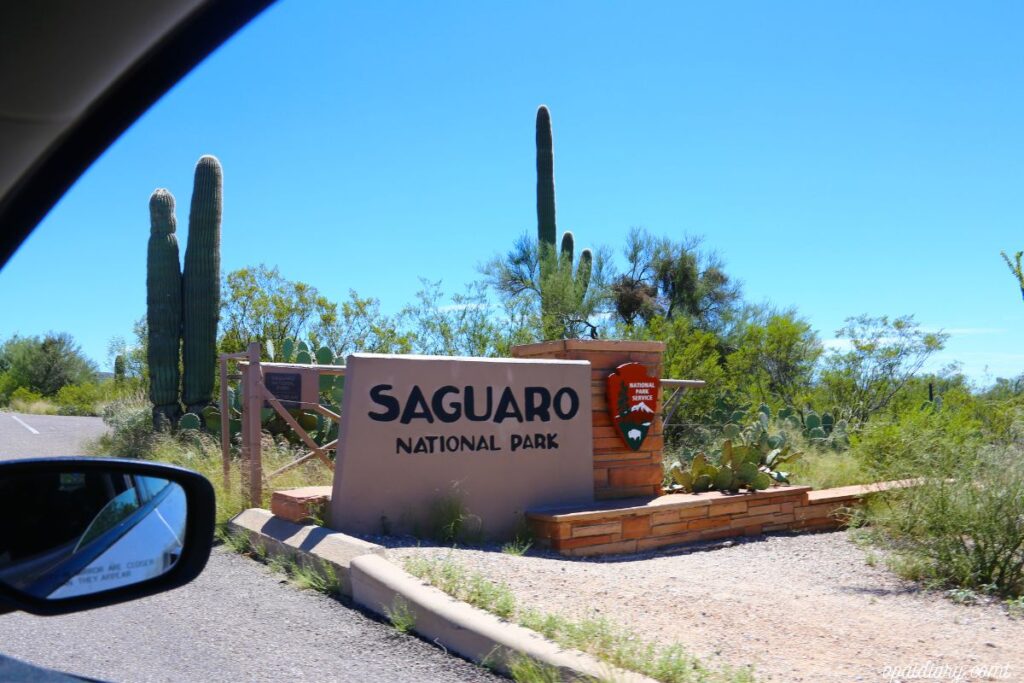
Recreational Activities
Saguaro National Park is a treasure trove of natural beauty and outdoor activities. From towering Saguaro Cacti to breathtaking views of the Sonoran Desert, the park offers endless opportunities for adventure. Whether you’re a hiking enthusiast, a camping lover, or just want to explore notable landmarks, there’s something for everyone to enjoy.
Hiking Trails
Saguaro National Park boasts numerous hiking trails that cater to all levels of hikers. The park is divided into two districts: the Rincon Mountain District (East) and the Tucson Mountain District (West). Each district offers unique hiking routes and nature trails.
Some popular trails include:
- Desert Ecology Trail: This short, easy trail is perfect for families and beginners. It offers a quick introduction to the park’s desert flora and fauna.
- Freeman Homestead Trail: A moderate 1-mile loop that takes you through lush desert vegetation and offers excellent wildlife viewing opportunities.
- King Canyon Trail: A more challenging hike that rewards adventurers with panoramic views of the Sonoran Desert.
For those seeking a more strenuous hike, the Hugh Norris Trail is a must-try. It spans 9.8 miles round trip and offers stunning vistas of the Saguaro Cacti forest.
Hiking trails in the park provide a great way to connect with nature, observe wildlife, and enjoy the serene beauty of the desert landscape.
Camping Options
Camping in Saguaro National Park allows visitors to immerse themselves in the natural beauty of the desert. The park offers several campgrounds that cater to different camping preferences.
In the Rincon Mountain District (East), the Manning Camp is a popular backcountry campground. It requires a permit and a strenuous hike to reach, but the experience is well worth it. Campers are treated to cooler temperatures and a lush, forested area.
For those who prefer car camping, the Gilbert Ray Campground in the Tucson Mountain District (West) is an excellent choice. It offers:
- 108 campsites
- Restrooms with flush toilets
- Electrical hookups
- Picnic tables
Campers can enjoy scenic drives and explore nearby hiking trails during their stay. It’s a great base for exploring the western side of the park.
Whether you prefer backcountry campgrounds or developed sites, Saguaro National Park offers camping options that suit every adventurer’s needs.
Notable Landmarks
Saguaro National Park is home to several notable landmarks that offer fascinating insights into the region’s natural and cultural history. The Visitor Center in both districts provides a great starting point for exploring these landmarks.
In the Rincon Mountain District (East), the Cactus Forest Loop Drive is a must-see. This scenic drive offers numerous pullouts where visitors can stop and admire the towering Saguaro Cacti. It’s an excellent way to experience the park’s beauty from the comfort of your vehicle.
Another notable landmark is the Signal Hill Petroglyphs in the Tucson Mountain District (West). Here, you can see ancient rock art created by the Hohokam people. The petroglyphs offer a glimpse into the rich cultural history of the region.
Don’t miss the Bajada Loop Drive, a picturesque route that showcases the diverse desert flora and stunning landscapes of the park. This drive is perfect for photographers and nature enthusiasts alike.
Exploring these notable landmarks provides a deeper appreciation of Saguaro National Park and its unique place in the Sonoran Desert ecosystem.
Visitor Information
Exploring Saguaro National Park is an unforgettable experience. Nestled in the Sonoran Desert, this park is home to the iconic Saguaro Cactus. Visitors can enjoy a variety of outdoor activities, including hiking, wildlife viewing, and scenic drives. To make the most of your visit, it’s essential to know the best times to visit and the available visitor centers.
Best Time To Visit
Choosing the right time to visit Saguaro National Park can enhance your experience. The park is open year-round, but the climate varies greatly throughout the year.
Spring (March to May):
- Temperatures are mild, ranging from 70°F to 90°F.
- Wildflowers bloom, adding vibrant colors to the desert landscape.
- Ideal for hiking trails and photography opportunities.
Fall (September to November):
- Cooler temperatures, from 70°F to 85°F.
- Perfect for outdoor activities and scenic drives.
- Less crowded compared to spring.
Summer (June to August):
- Extremely hot, with temperatures often above 100°F.
- Not recommended for long hikes or strenuous activities.
- Early mornings and late evenings are the best times for wildlife viewing.
Winter (December to February):
- Mild daytime temperatures, averaging 65°F to 75°F.
- Chilly nights, sometimes dropping below freezing.
- Good for camping facilities and exploring the desert landscape.
Visitor Centers
Saguaro National Park has two main visitor centers that provide essential information and services.
Red Hills Visitor Center (West):
- Located in the Tucson Mountain District.
- Offers exhibits about the Sonoran Desert and Saguaro Cactus.
- Provides maps, guides, and information on hiking trails.
- Features a bookstore and restrooms.
- Address: 2700 N. Kinney Rd, Tucson, AZ.
Rincon Mountain Visitor Center (East):
- Located in the Rincon Mountain District.
- Exhibits focus on the park’s natural and cultural history.
- Information on scenic drives and camping facilities available.
- Offers a small gift shop and restrooms.
- Address: 3693 S. Old Spanish Trail, Tucson, AZ.
Both visitor centers are excellent starting points for your adventure. They provide necessary information and enhance your understanding of the park’s unique ecosystem. Enjoy your visit to Saguaro National Park and take in the beauty of Tucson attractions.
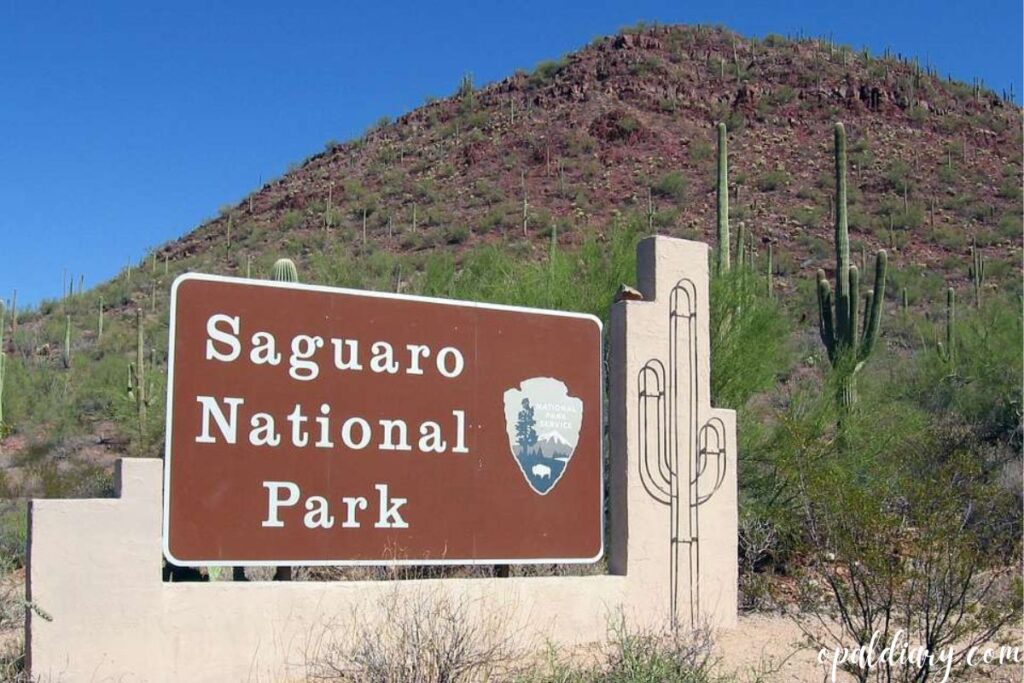
Photography Tips
Saguaro National Park is a stunning destination for photography enthusiasts. The park is famous for its giant Saguaro cacti and breathtaking desert landscapes. Whether you are a professional or just starting, capturing the beauty of this Arizona national park is a rewarding experience. Below are some valuable photography tips that can help you make the most of your visit.
Best Spots For Photos
Finding the best spots for photos in Saguaro National Park can elevate your photography game. Here are some top recommendations:
- Javelina Rocks: Known for its unique rock formations, this spot offers excellent views of the Saguaro cacti.
- Signal Hill: Famous for its ancient petroglyphs and panoramic views, it is a must-visit for history and nature enthusiasts.
- Valley View Overlook: This viewpoint provides sweeping views of the desert landscapes and is perfect for wide-angle shots.
Using a table can help you plan your visit:
| Location | Highlight | Best Time |
|---|---|---|
| Javelina Rocks | Rock Formations | Morning |
| Signal Hill | Petroglyphs | Afternoon |
| Valley View Overlook | Desert Vistas | Sunset |
Additionally, try capturing some of the park’s wildlife. Look out for Gila woodpeckers and desert tortoises. Hiking trails like the Freeman Homestead Trail offer excellent opportunities for both landscape and wildlife photography.
Time Of Day Considerations
The time of day can significantly impact your photographs. Here are some tips to help you choose the best time:
Sunrise: The early morning light is soft and golden. It is perfect for capturing the Saguaro cacti in their most flattering light. The park is less crowded, offering a serene experience. Popular spots like the Signal Hill and Valley View Overlook look magical at dawn.
Midday: The harsh sunlight can create strong shadows, which can be challenging. However, it can also add a dramatic effect to your photos. Use a polarizing filter to reduce glare and enhance colors. Midday is also a good time for close-up shots of desert flora.
Sunset: The golden hour before sunset offers ideal lighting conditions. The desert landscapes glow with warm hues. Scenic viewpoints like Gates Pass and the Desert Discovery Trail provide stunning backdrops. The setting sun creates long shadows, adding depth to your photos.
Finally, consider the weather conditions. A cloudy day can soften the light and reduce shadows. Rain can create interesting reflections and textures. Always check the weather forecast before heading out. Plan accordingly to capture the best shots during your outdoor adventures.
Conservation Efforts
Saguaro National Park, located in Arizona, is a stunning natural wonder that showcases the beauty of the Sonoran Desert. The park is famous for its iconic Saguaro Cactus, which can live for over 150 years and grow to be over 40 feet tall. Conservation efforts are crucial to maintaining the park’s unique ecosystem and ensuring its biodiversity thrives for future generations.
Park Management
Effective park management is vital for the conservation of Saguaro National Park. The park authorities implement various strategies to protect the desert ecosystem and its inhabitants.
Park rangers play a key role in these efforts. They monitor the health of the Saguaro Cactus and other plant species, ensuring they are not threatened by diseases or invasive species. Rangers also manage wildlife conservation programs to protect the diverse fauna, including reptiles, birds, and mammals.
The park’s management team also focuses on maintaining the hiking trails. Well-maintained trails help prevent soil erosion and minimize the impact on the surrounding environment. The Visitor Center provides educational materials and guided tours to inform visitors about the importance of preserving the park’s natural beauty.
Here are some key management practices:
- Regular monitoring of plant and animal health
- Maintaining hiking trails to reduce environmental impact
- Educational programs at the Visitor Center
- Wildlife conservation initiatives
These efforts help ensure that Saguaro National Park remains a safe haven for its unique flora and fauna.
Community Involvement
Community involvement is essential in supporting the conservation efforts at Saguaro National Park. Local communities in Tucson and other nearby areas actively participate in various programs to protect the park.
Volunteer programs allow residents to assist park rangers in tasks such as trail maintenance, wildlife monitoring, and planting native species. These activities help enhance the park’s biodiversity and preserve its natural resources.
The park also collaborates with local schools and organizations to educate students about the importance of conservation. Educational workshops and field trips provide hands-on learning experiences, fostering a sense of responsibility towards the environment.
Key community involvement activities include:
- Volunteer programs for trail maintenance and wildlife monitoring
- Educational workshops for local schools
- Community planting events to restore native vegetation
- Public awareness campaigns about conservation efforts
By engaging the community, Saguaro National Park ensures that conservation is a shared responsibility, promoting a sustainable future for the desert ecosystem.
Local Attractions
Saguaro National Park is a breathtaking destination located near Tucson, Arizona. Famous for its iconic Saguaro Cactus, this park offers a unique glimpse into the beauty of the Sonoran Desert. While the park itself is a treasure trove of scenic views, desert flora, and outdoor activities, the surrounding area also boasts a variety of local attractions. These nearby spots enhance the experience for every visitor, making the trip unforgettable.
Nearby Parks
Exploring the region around Saguaro National Park can lead you to some other incredible parks. Each one offers its own unique attractions and natural beauty:
- Coronado National Forest: Just a short drive from Saguaro National Park, this forest offers diverse landscapes from deserts to pine forests. It is perfect for hiking trails and exploring different ecosystems.
- Organ Pipe Cactus National Monument: Located south of Tucson, this park is renowned for its stunning collection of cacti and rugged desert terrain. It’s an excellent spot for outdoor activities like hiking and bird-watching.
- Picacho Peak State Park: Known for its distinctive peak, this state park offers challenging hikes and historical significance. It was the site of a Civil War battle, making it a great place for history buffs.
Here is a quick comparison of the nearby parks:
| Park | Distance from Saguaro | Main Attraction |
|---|---|---|
| Coronado National Forest | 20 miles | Diverse Ecosystems |
| Organ Pipe Cactus National Monument | 120 miles | Unique Cacti |
| Picacho Peak State Park | 45 miles | Historical Significance |
Cultural Sites
The area around Saguaro National Park is rich in cultural history and sites. These destinations provide a deeper understanding of the region’s heritage:
- Arizona-Sonora Desert Museum: This museum is more than just exhibits. It combines a zoo, botanical garden, and art gallery. It offers a comprehensive look at desert wildlife and plant life, making it a must-visit.
- Mission San Xavier del Bac: Known as “The White Dove of the Desert,” this historic Spanish Catholic mission is an architectural masterpiece. It provides insight into the region’s colonial past and religious heritage.
- Old Tucson Studios: Step back in time to the Old West at this movie studio and theme park. It offers live-action shows and historical reenactments, making it a fun and educational experience for all ages.
The table below highlights some key details about these cultural sites:
| Site | Distance from Saguaro | Main Attraction |
|---|---|---|
| Arizona-Sonora Desert Museum | 5 miles | Desert Wildlife |
| Mission San Xavier del Bac | 15 miles | Historic Architecture |
| Old Tucson Studios | 10 miles | Old West Reenactments |
These cultural sites, alongside the natural beauty of Saguaro National Park, create a rich tapestry of experiences for visitors. The National Park Service ensures that these sites are well-maintained and informative, enhancing the overall visit to Tucson, Arizona.
Frequently Asked Questions
Where Is Saguaro National Park Located?
Saguaro National Park is located in southern Arizona, near the city of Tucson. It is divided into two districts: the Rincon Mountain District to the east and the Tucson Mountain District to the west.
What Can You Do At Saguaro National Park?
At Saguaro National Park, you can hike, bike, and enjoy scenic drives. The park offers numerous trails, wildlife viewing, and beautiful desert landscapes. Photography and stargazing are also popular activities.
When Is The Best Time To Visit Saguaro National Park?
The best time to visit Saguaro National Park is from October to April. During these months, the weather is cooler and more comfortable for outdoor activities.
How Tall Can Saguaro Cacti Grow?
Saguaro cacti can grow up to 40-60 feet tall. They are the largest cacti in the United States and can live for over 150 years.
Conclusion
Visiting Saguaro National Park offers a unique desert adventure. The stunning landscapes captivate every visitor. Towering cacti and diverse wildlife create unforgettable memories. Perfect for hiking and exploring, the park invites nature lovers. Don’t miss the breathtaking sunsets. They paint the sky with vibrant colors.
Plan a trip soon and immerse in the beauty. Saguaro National Park awaits your discovery. Safe travels!


